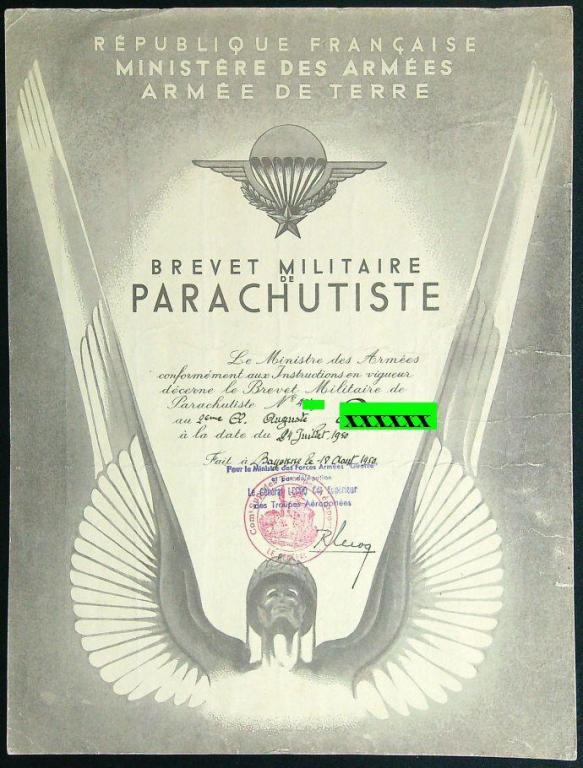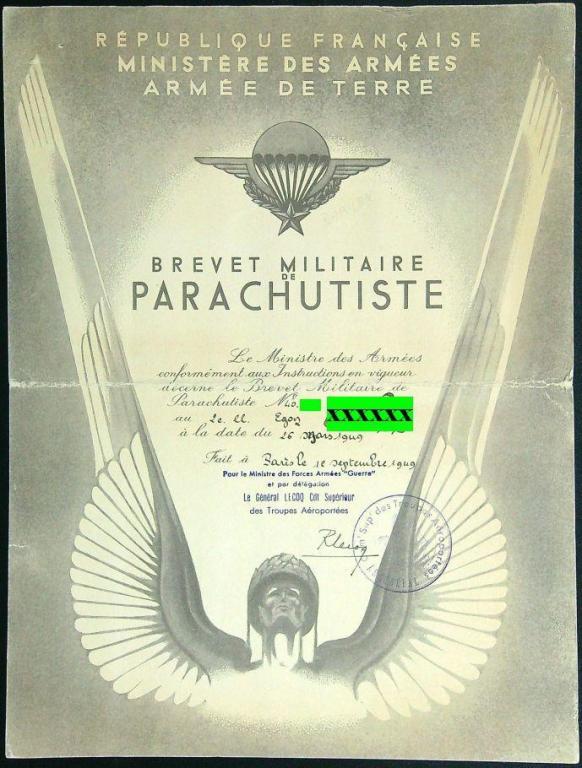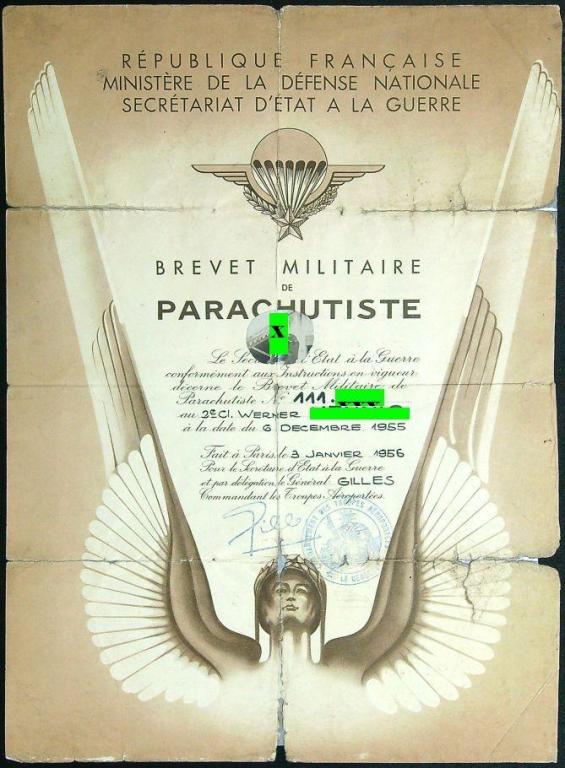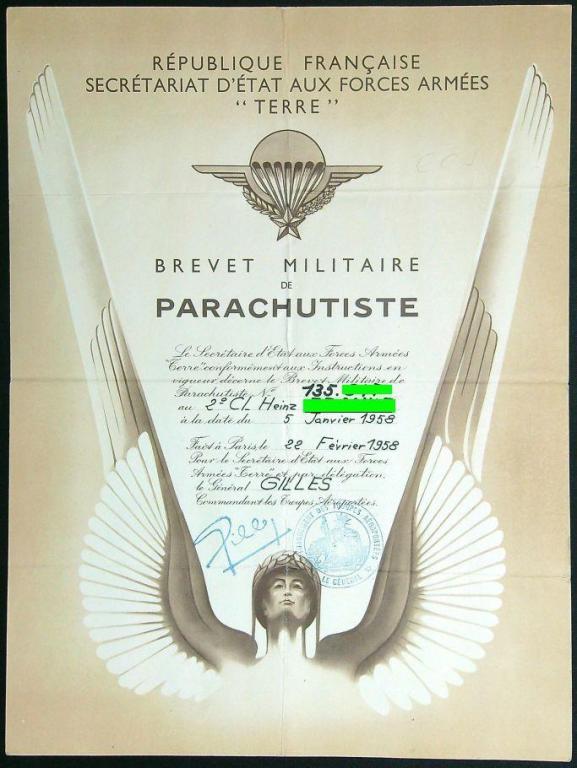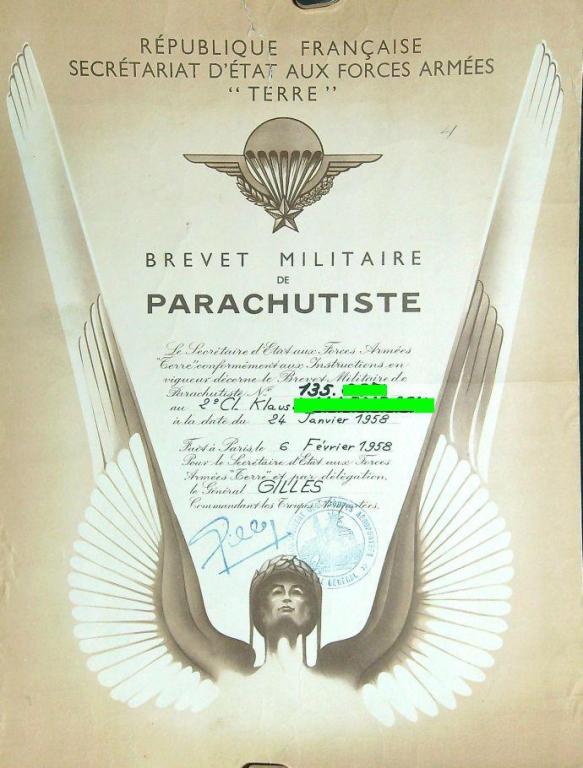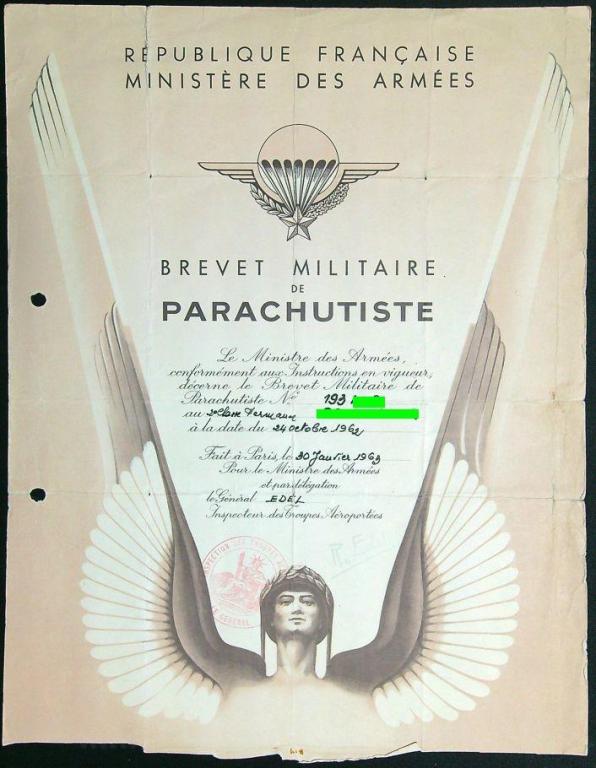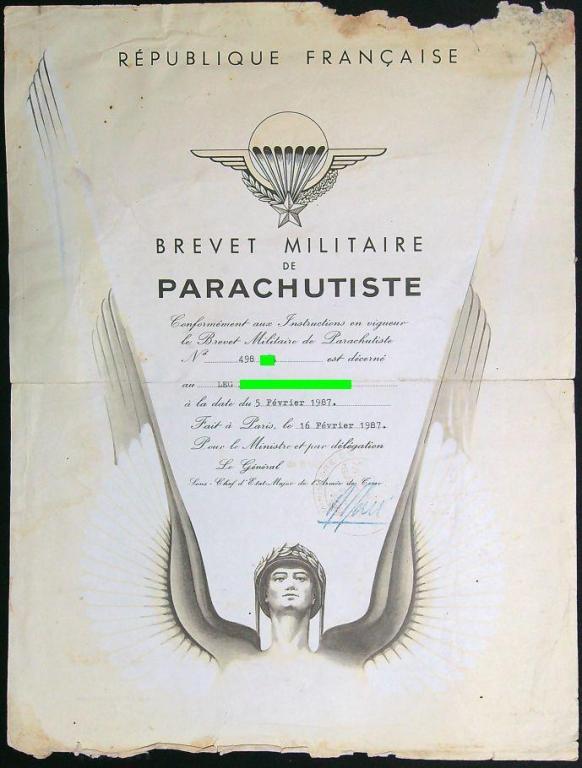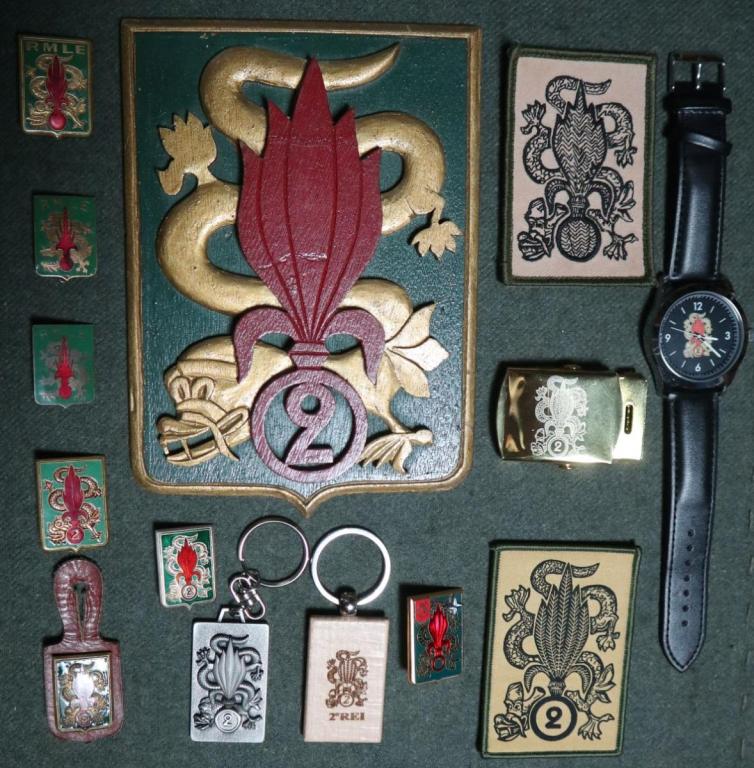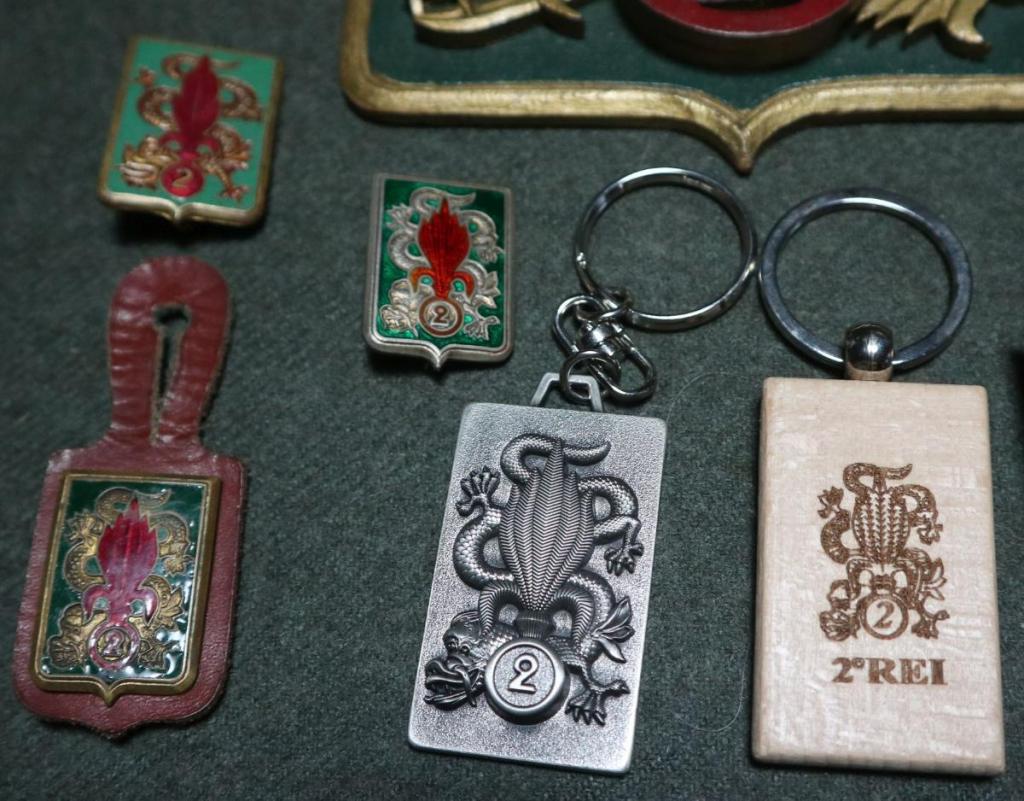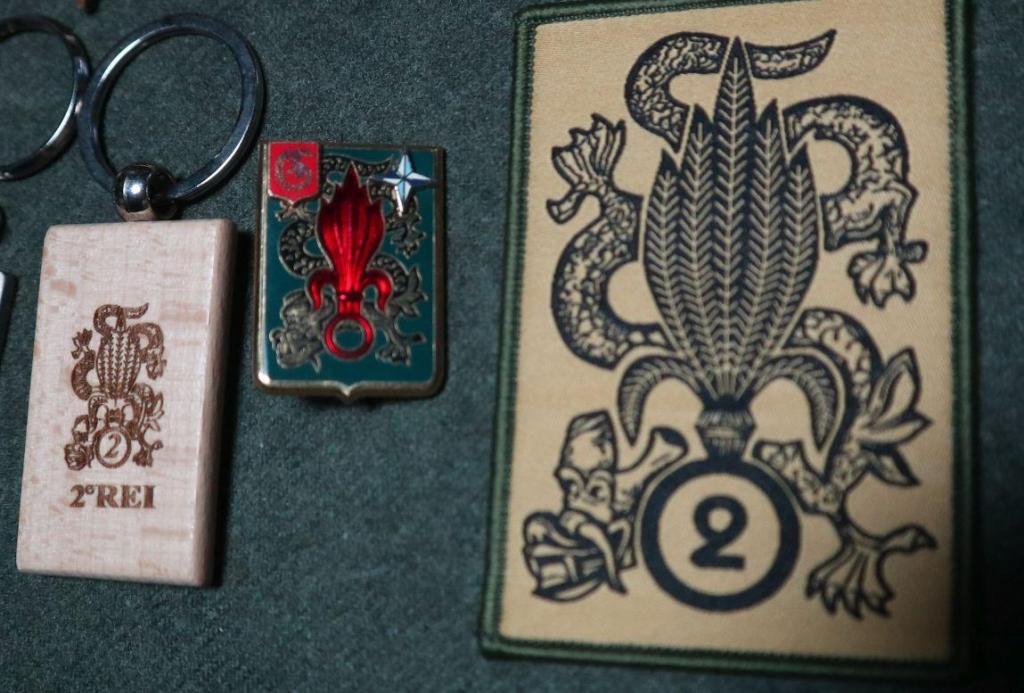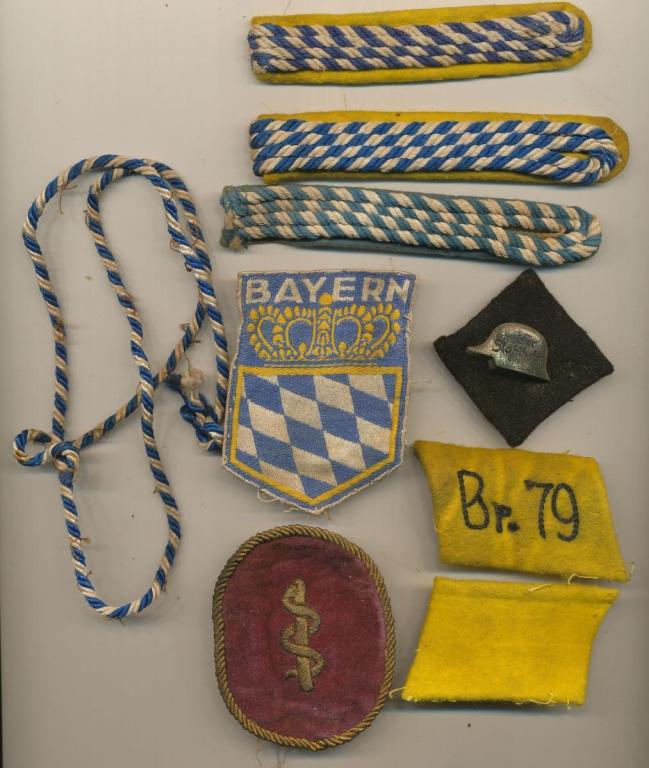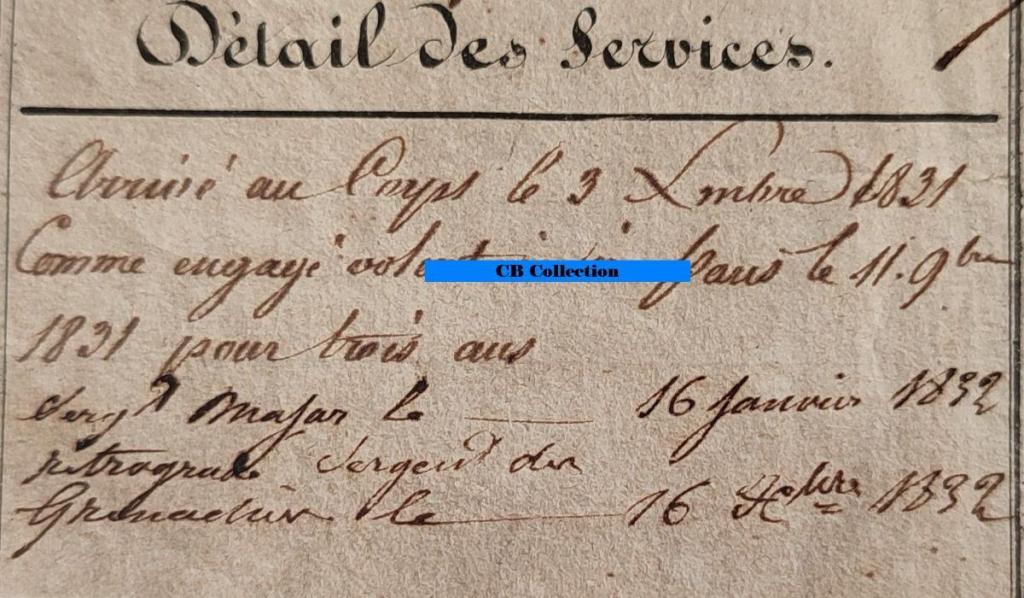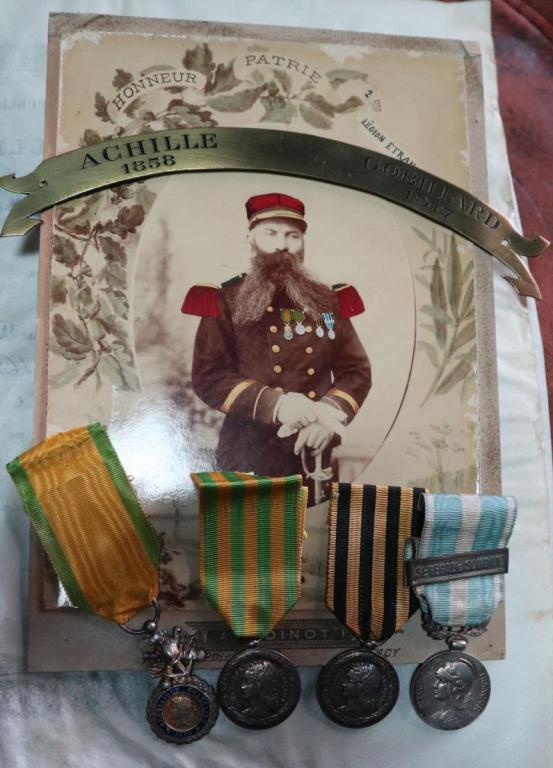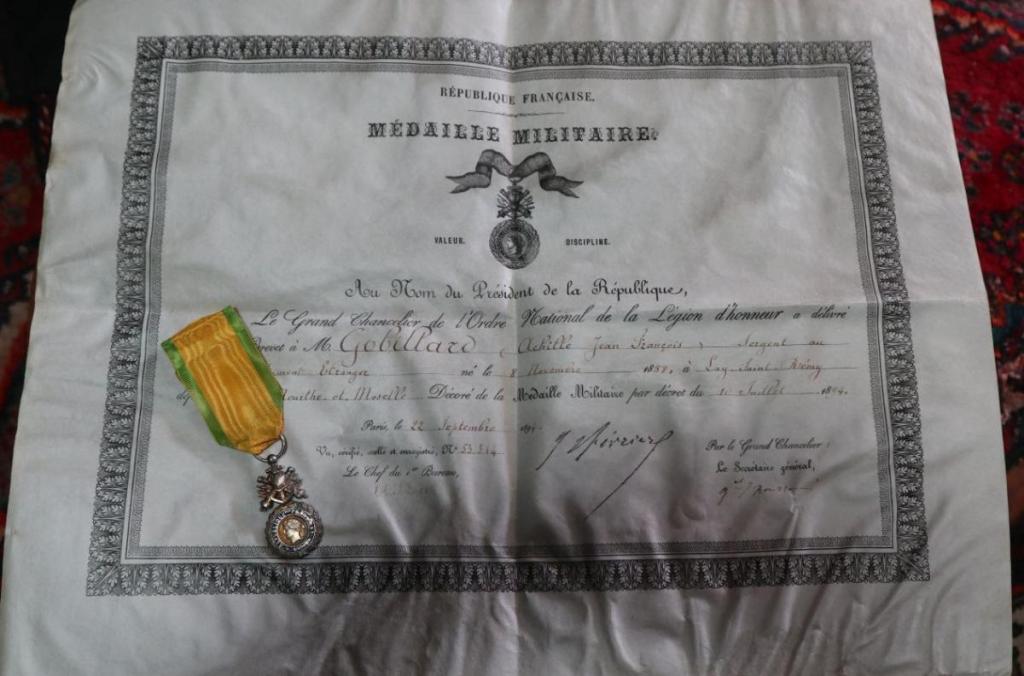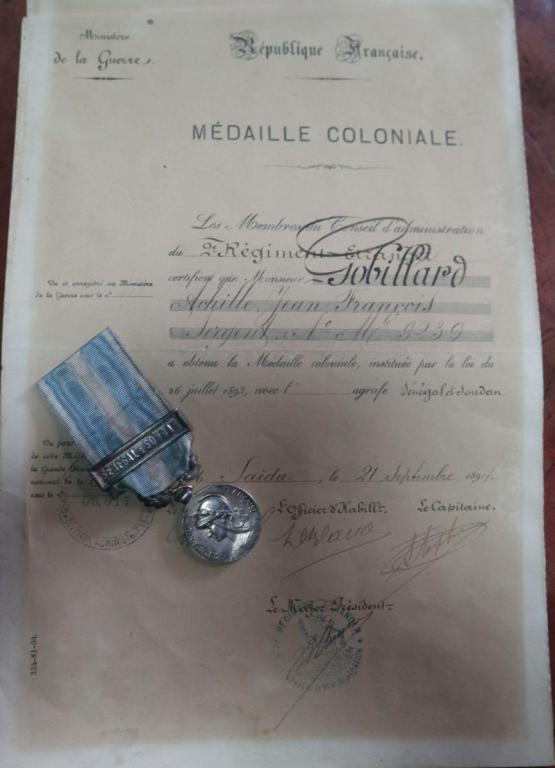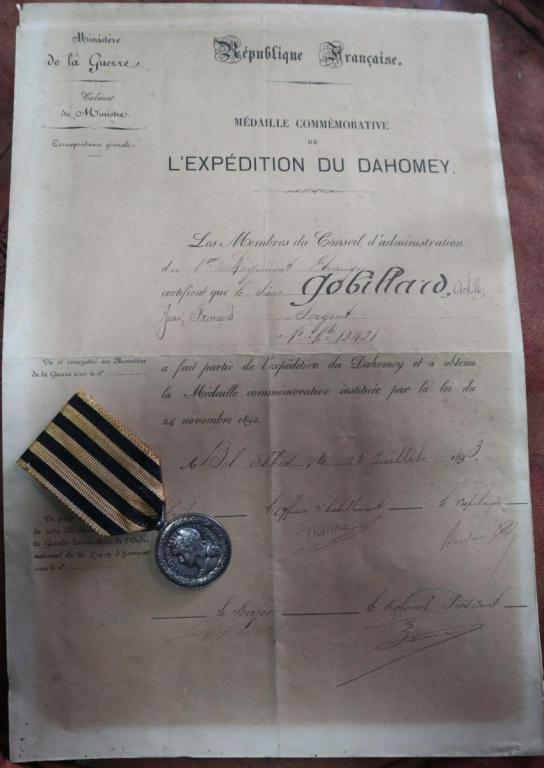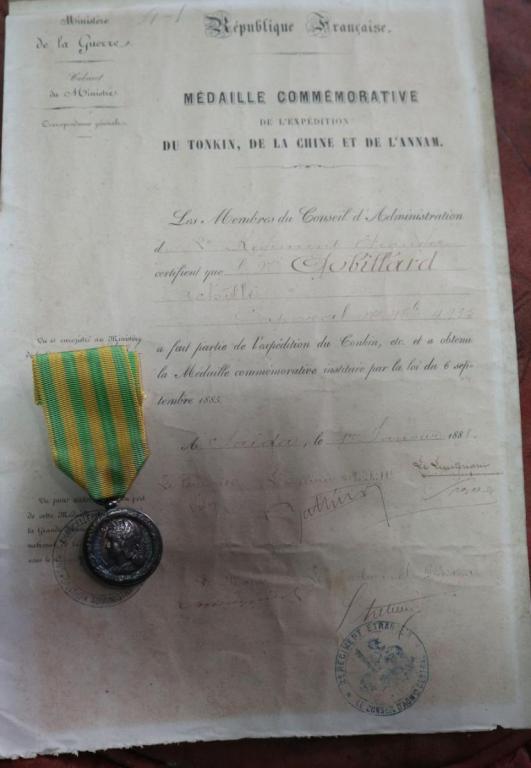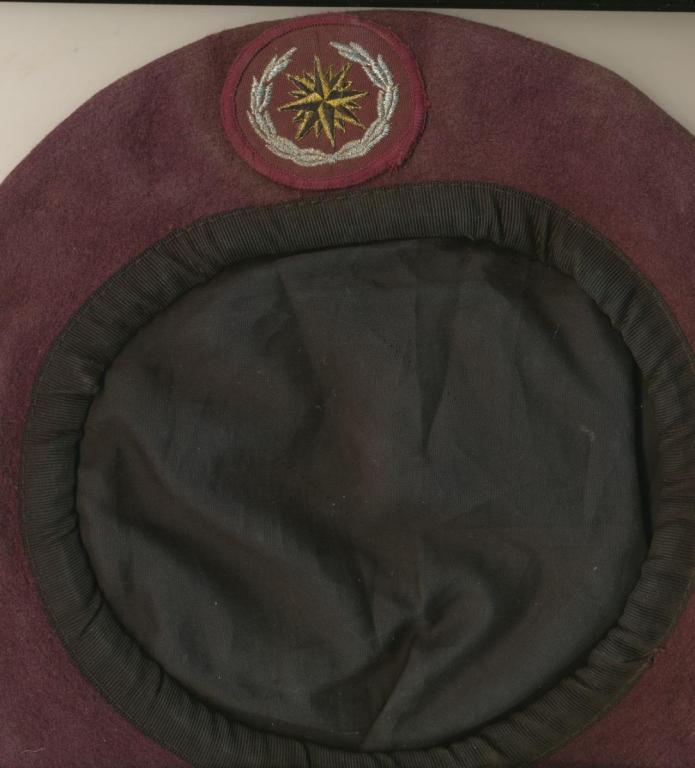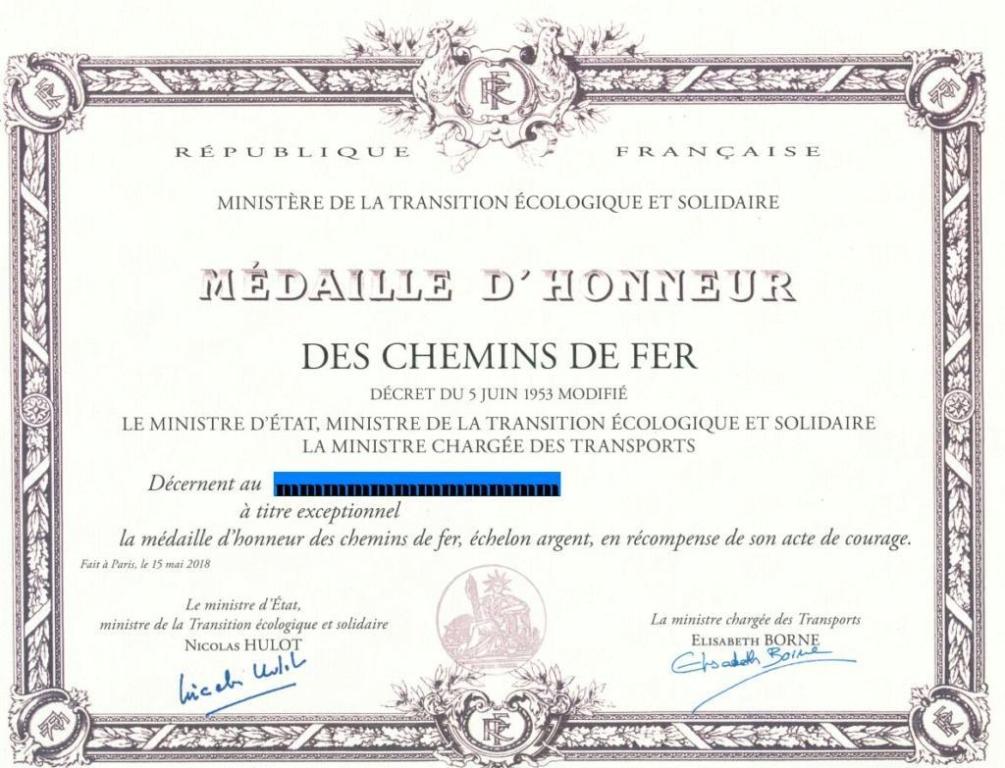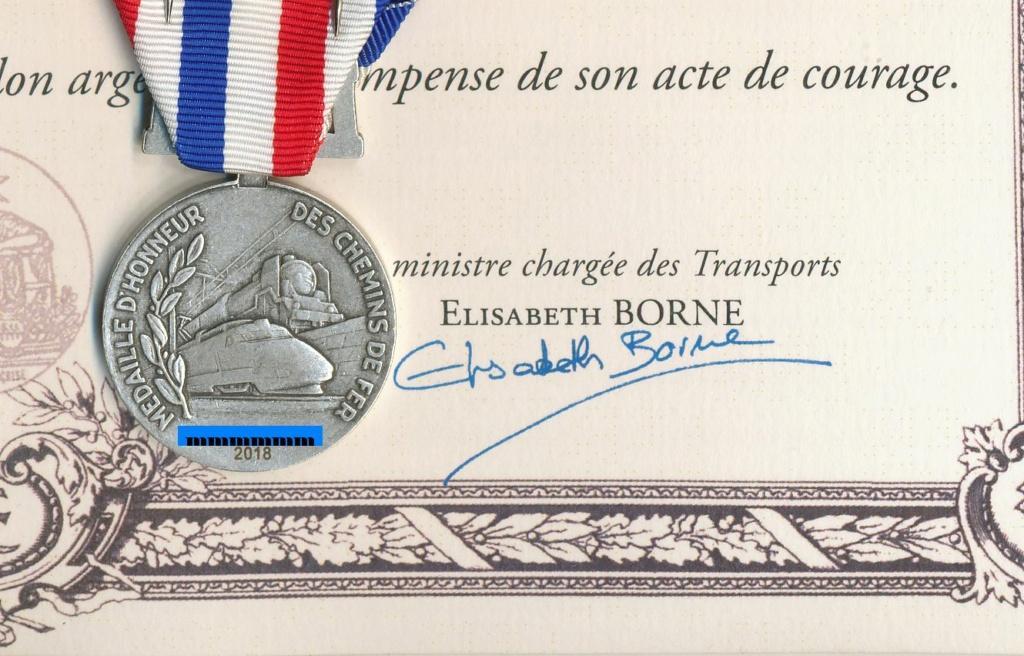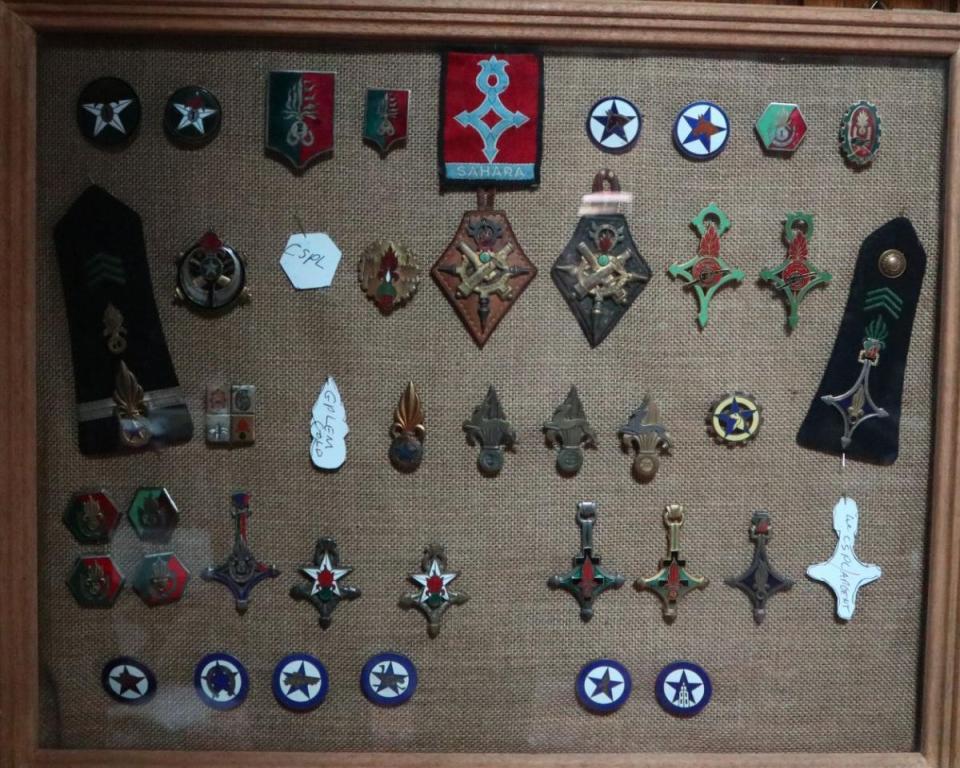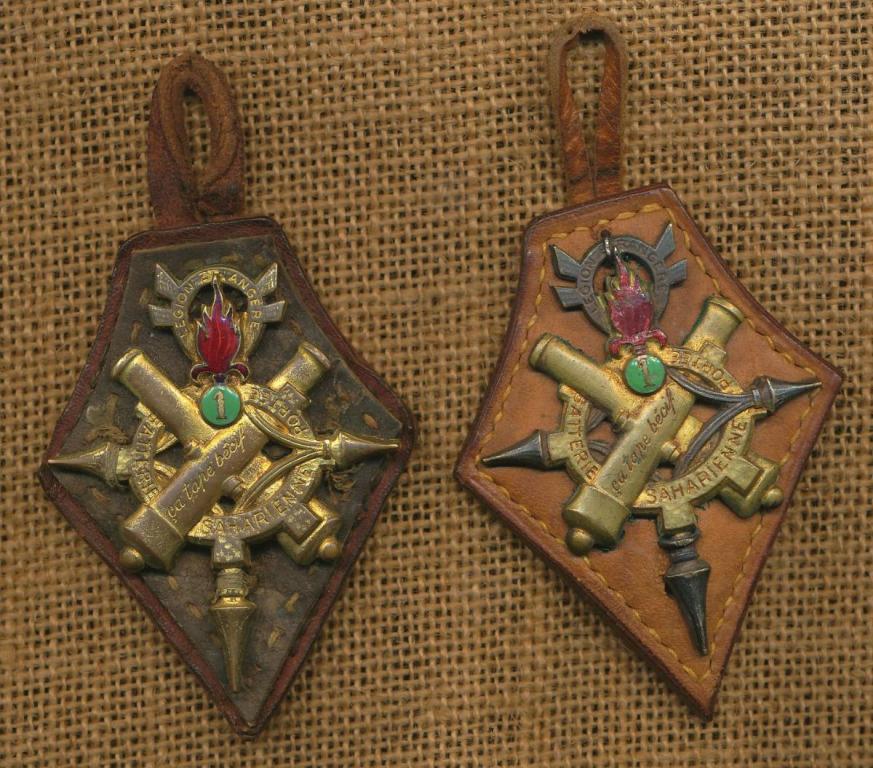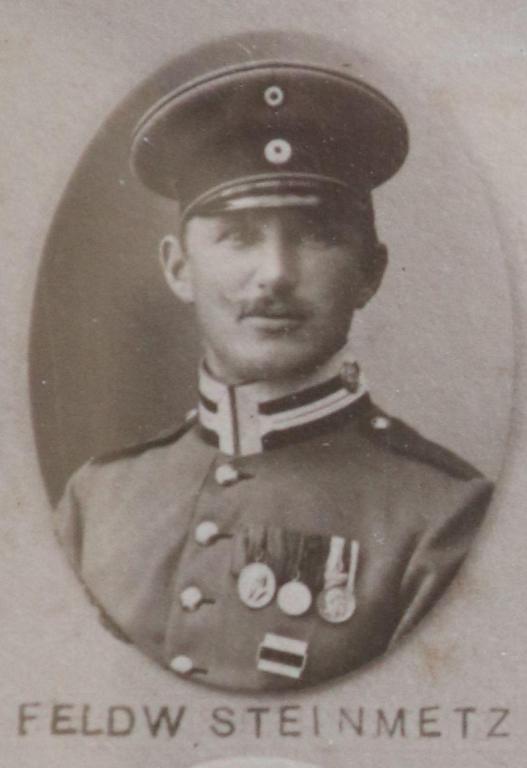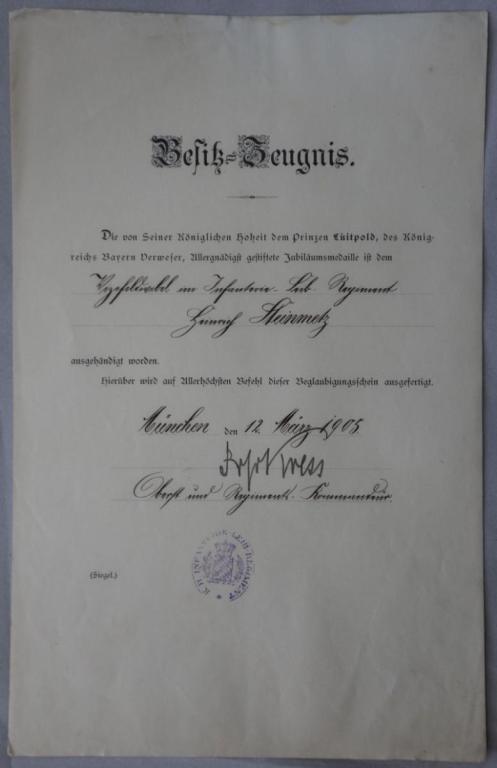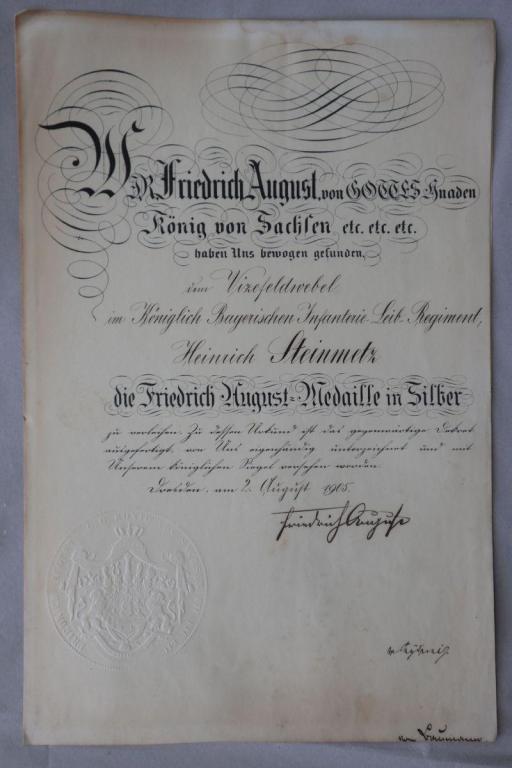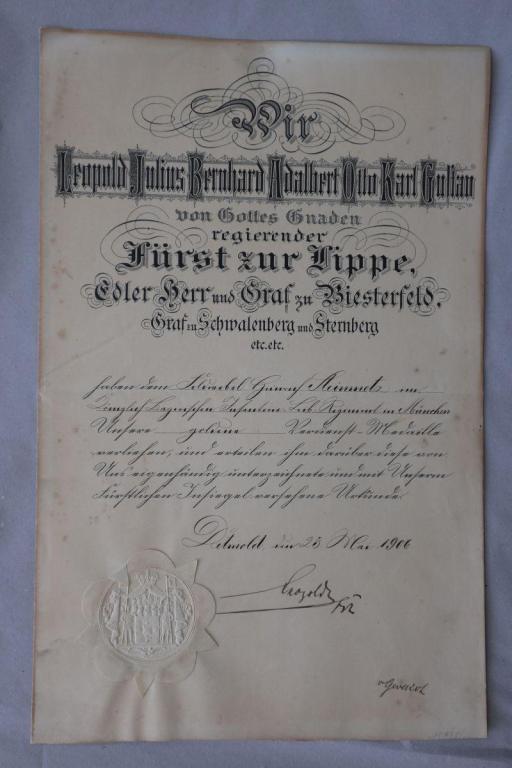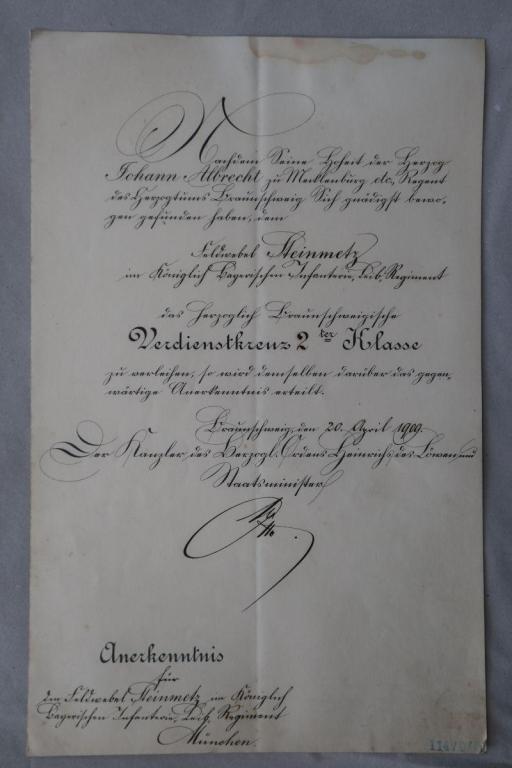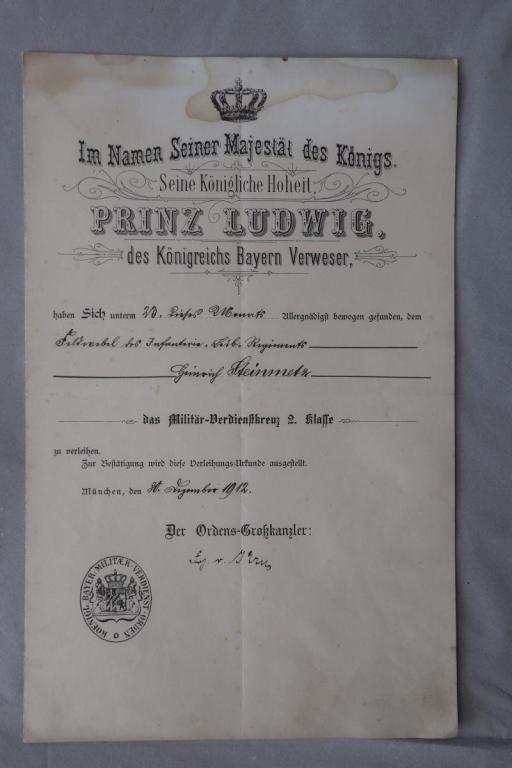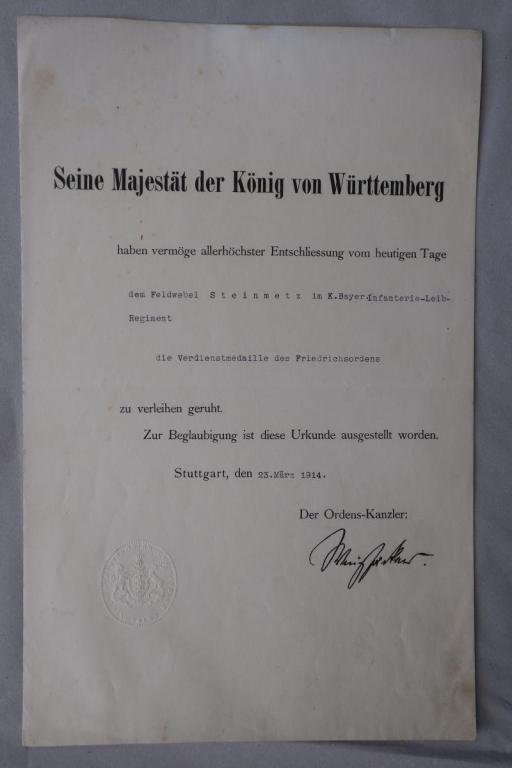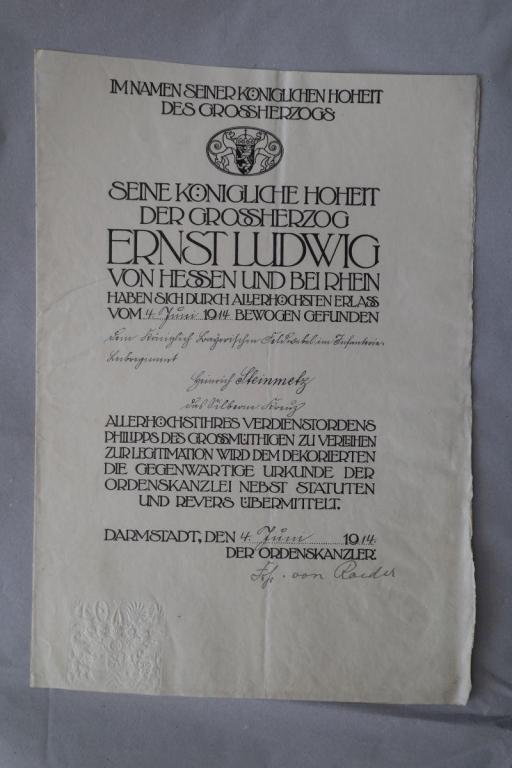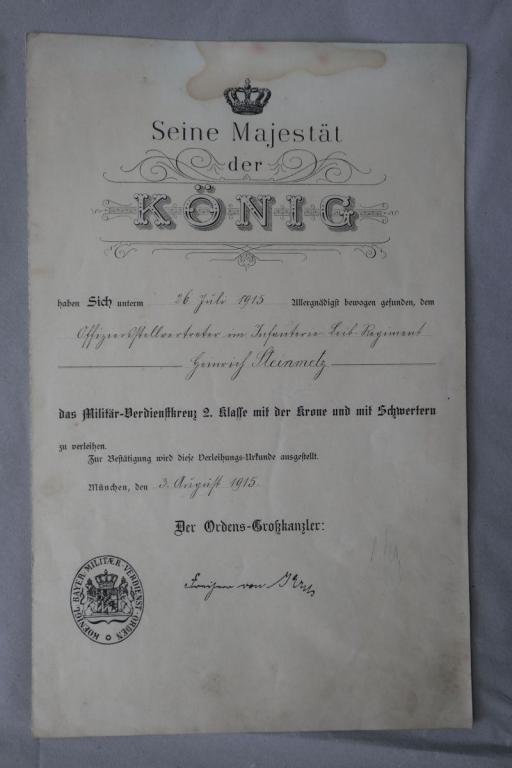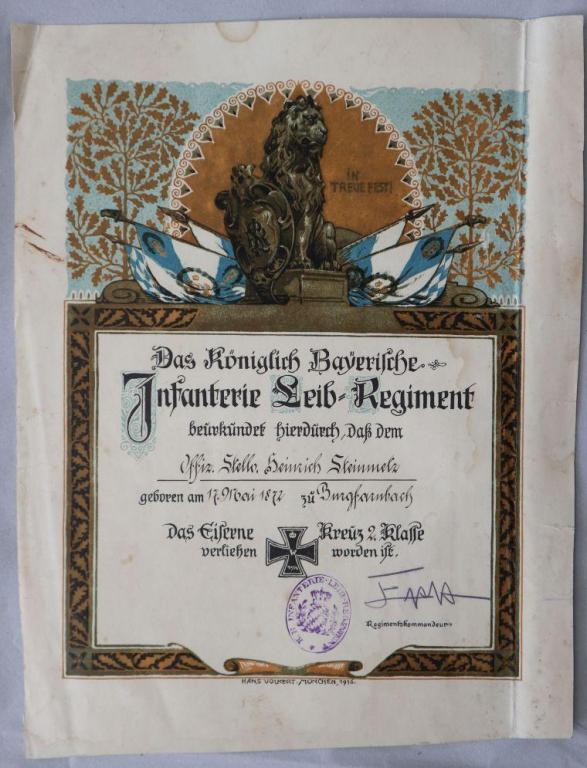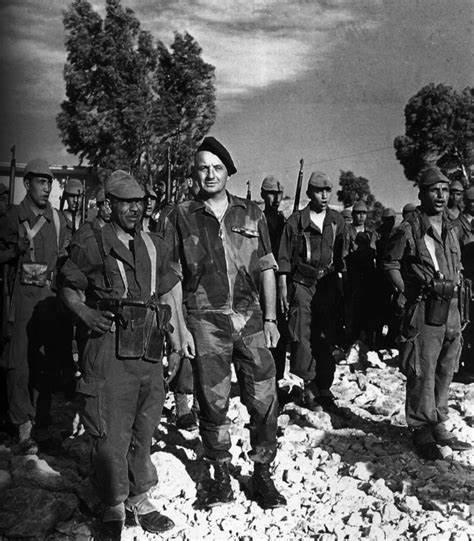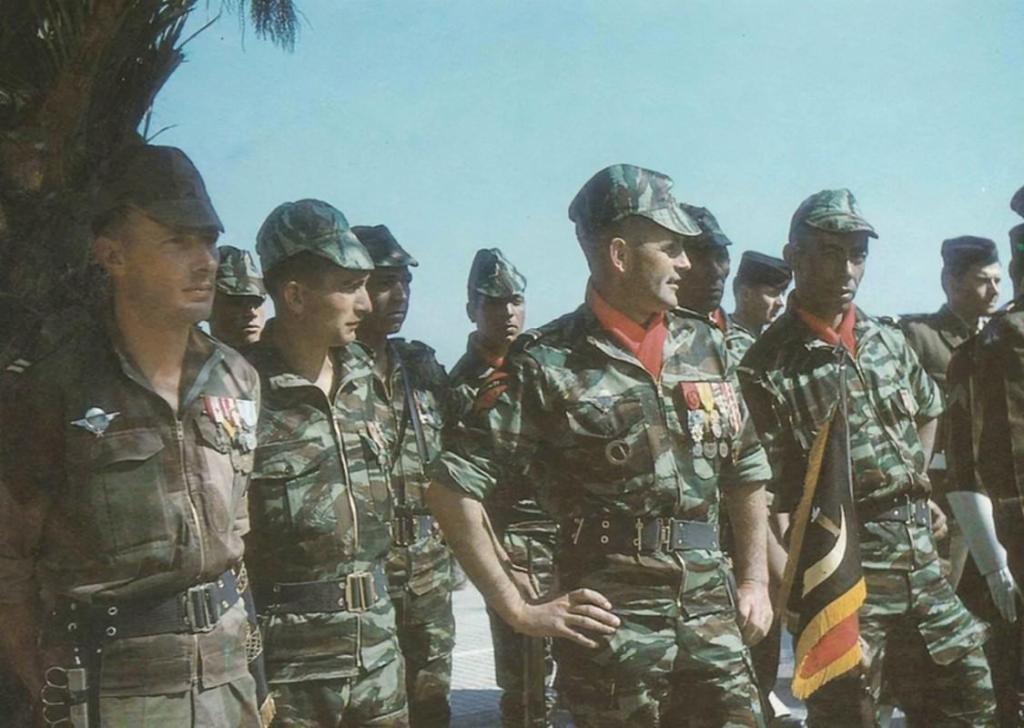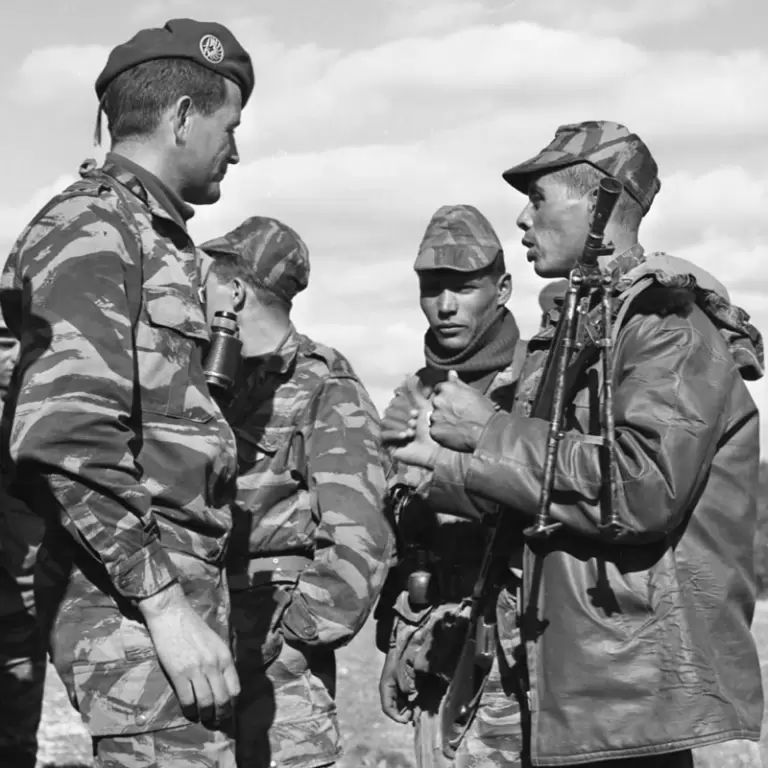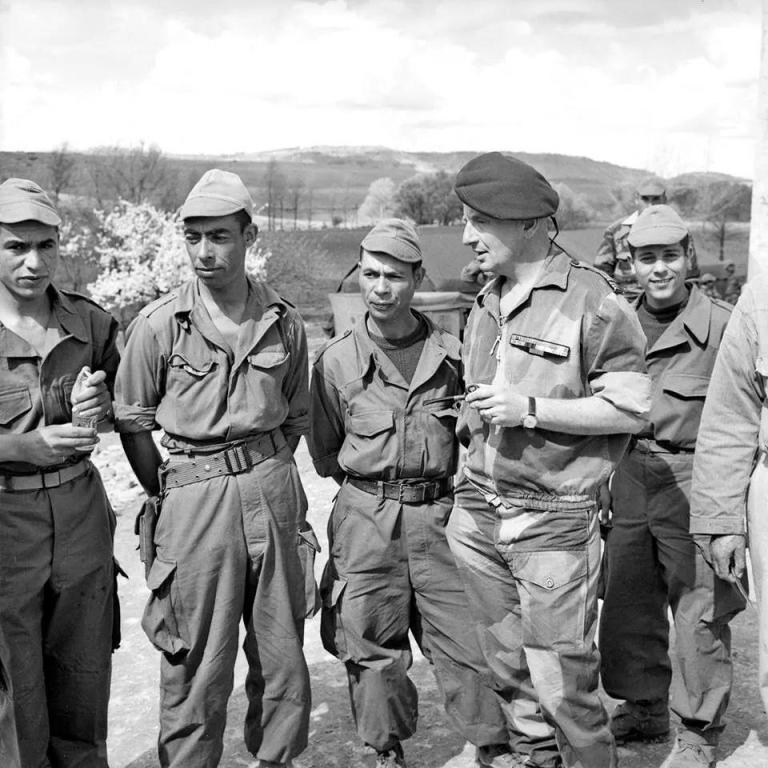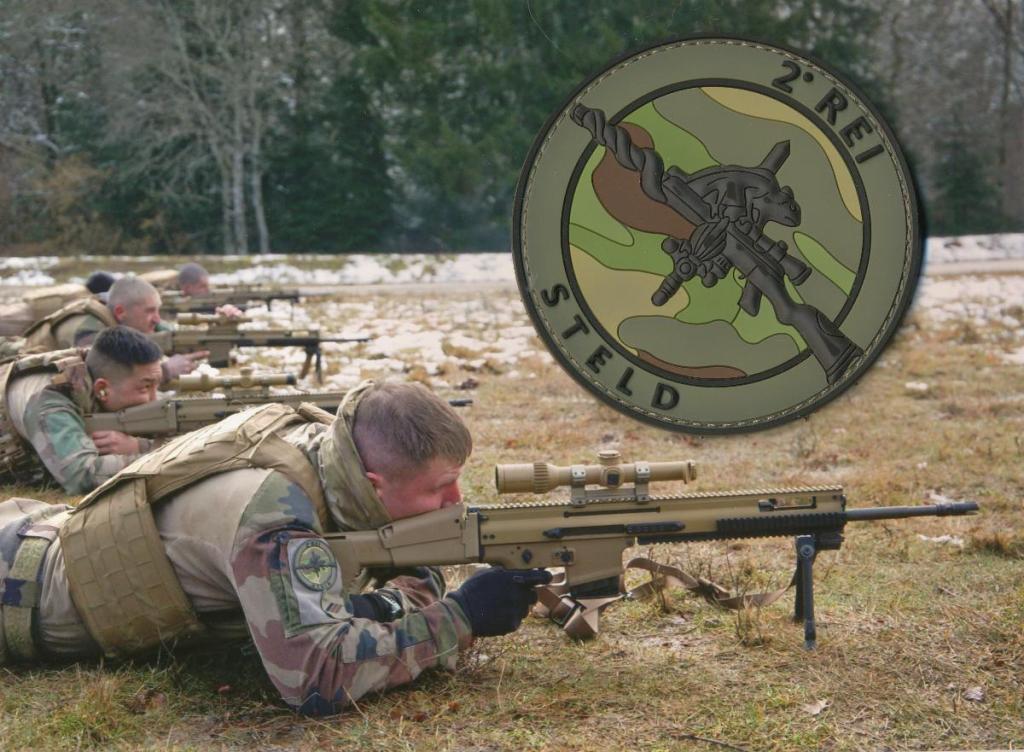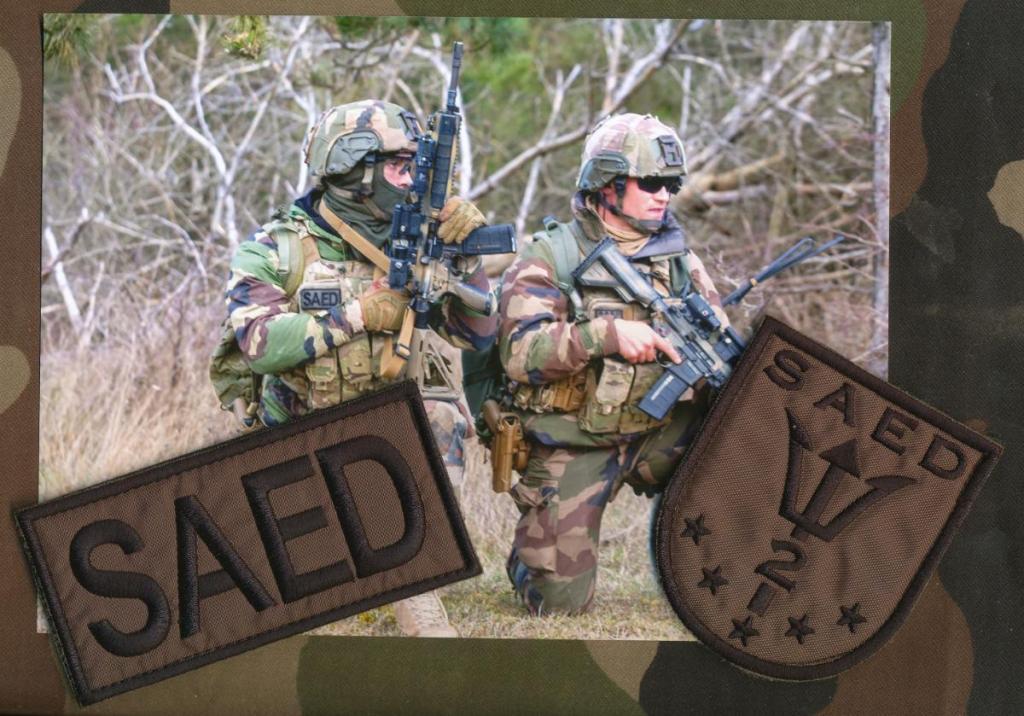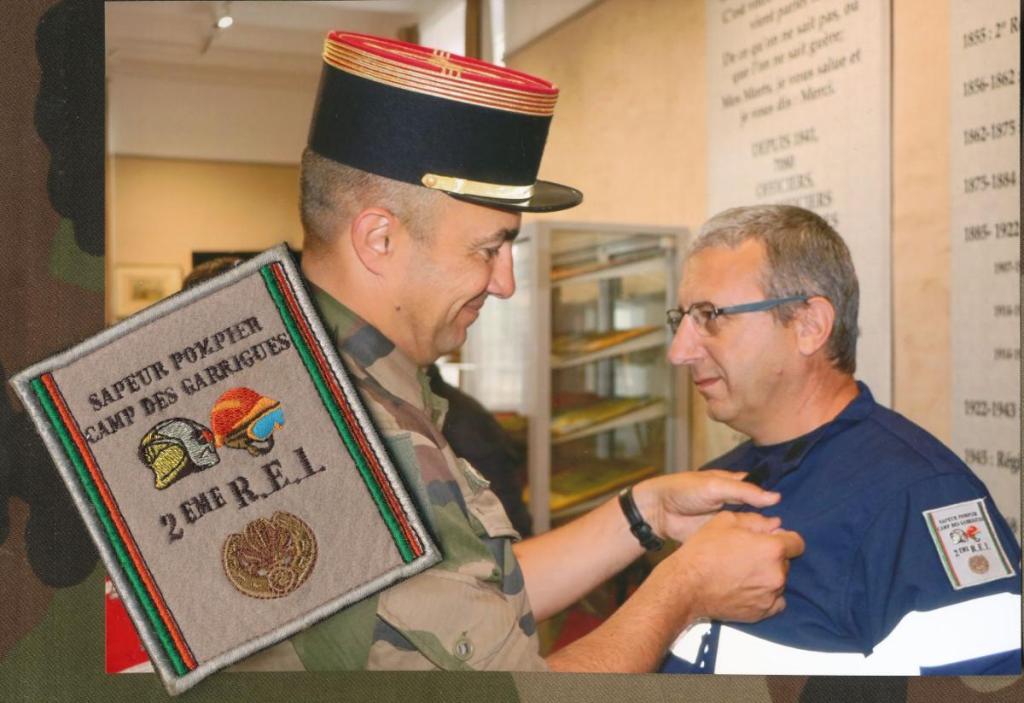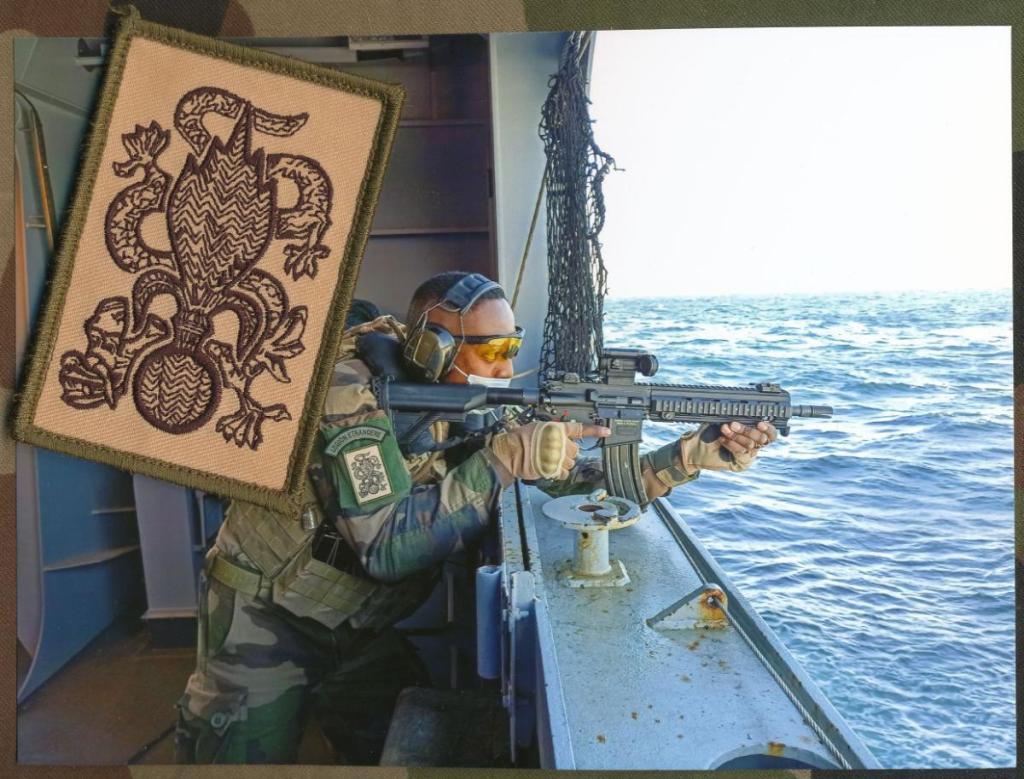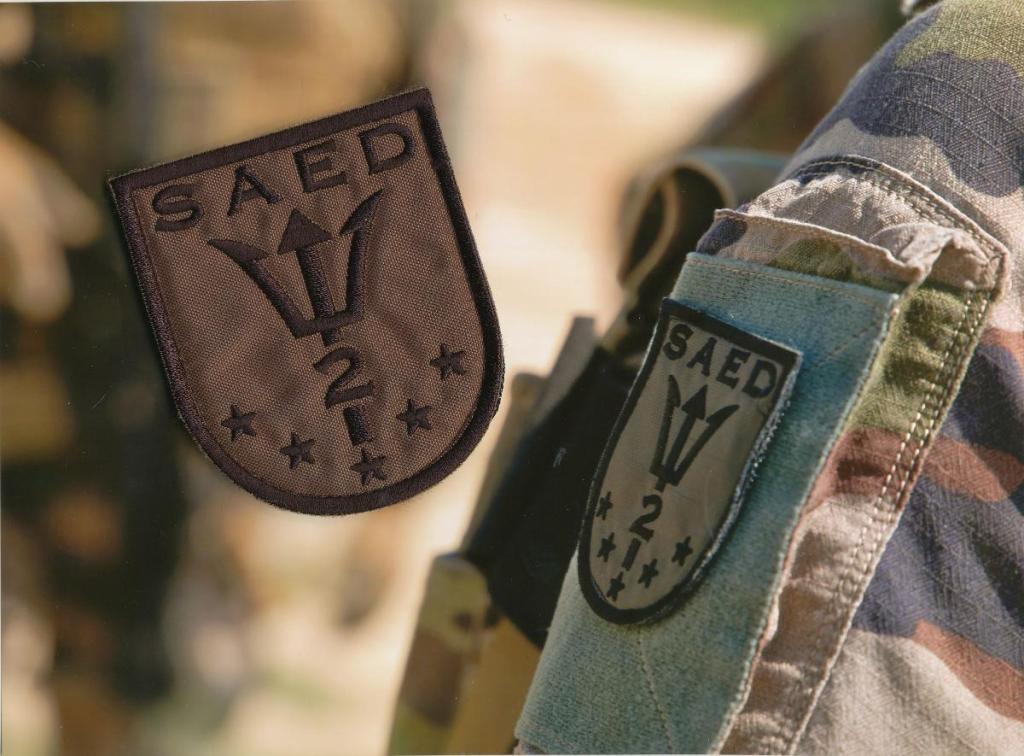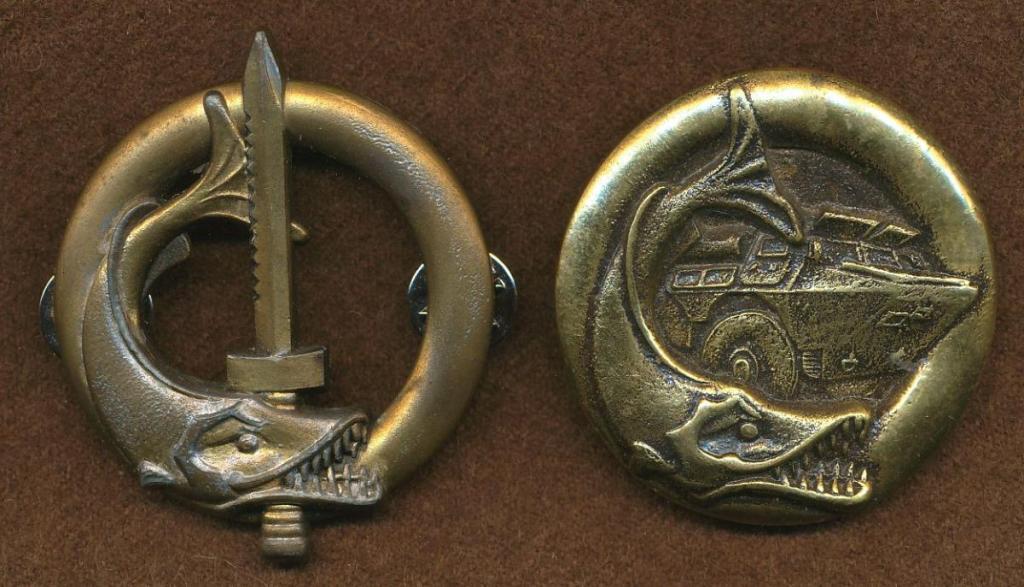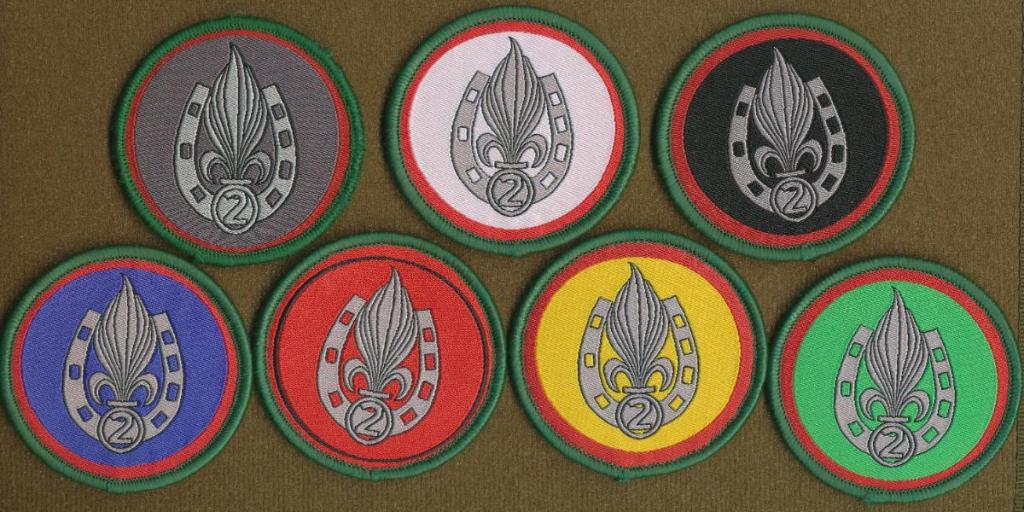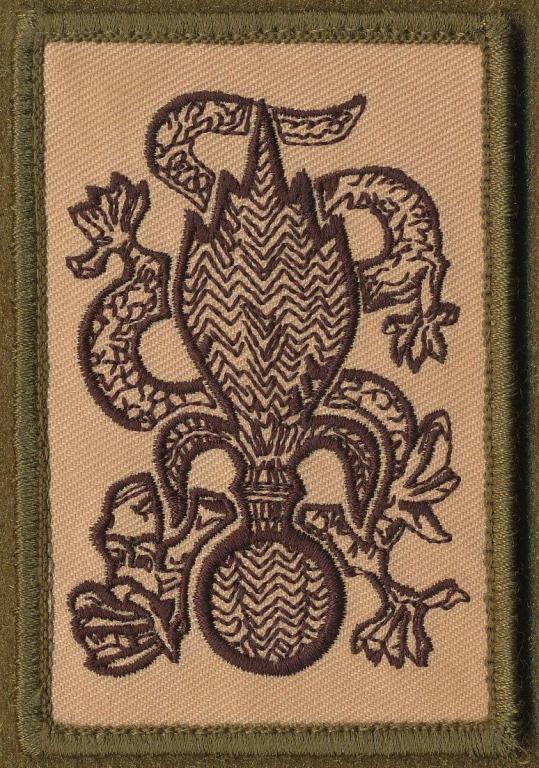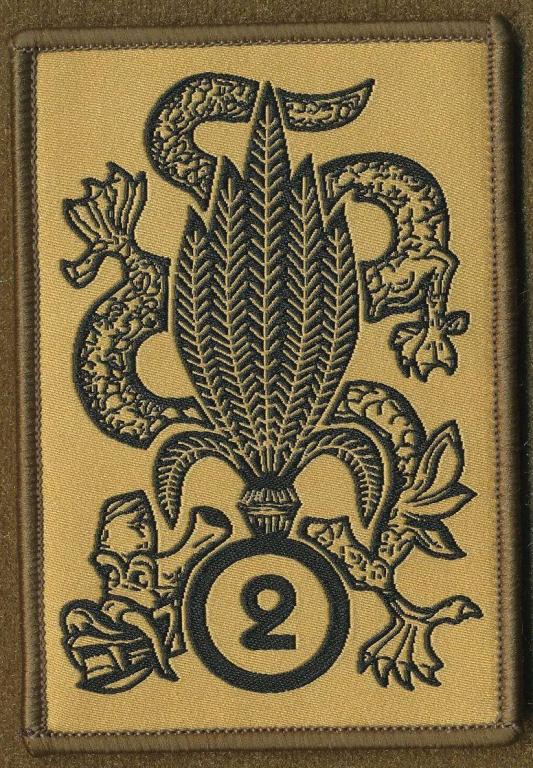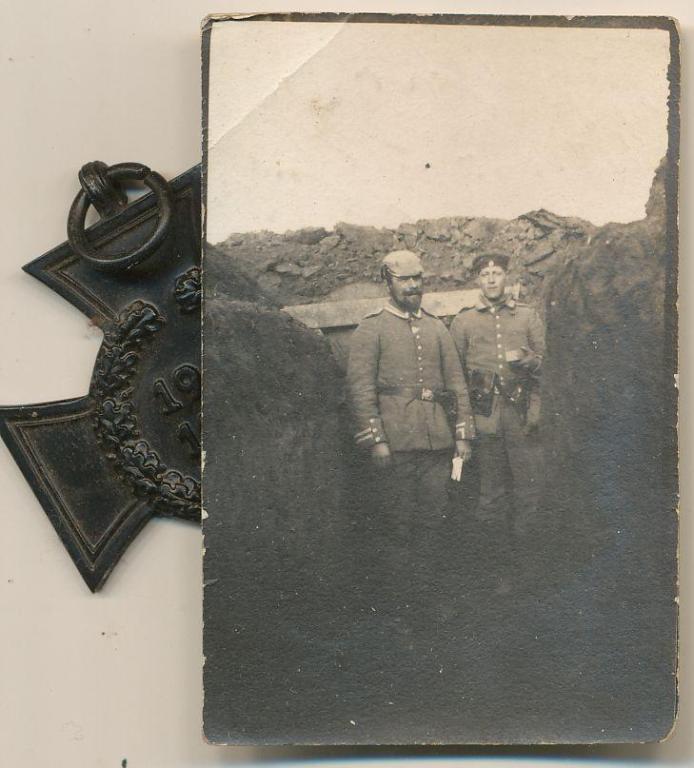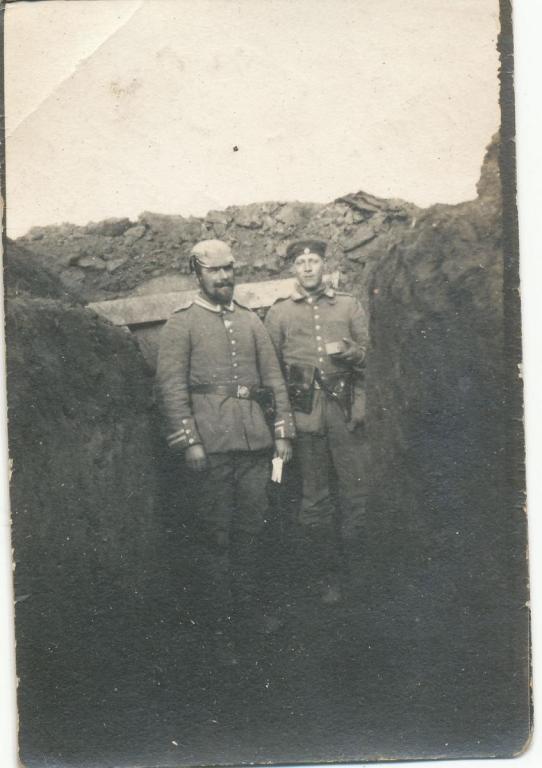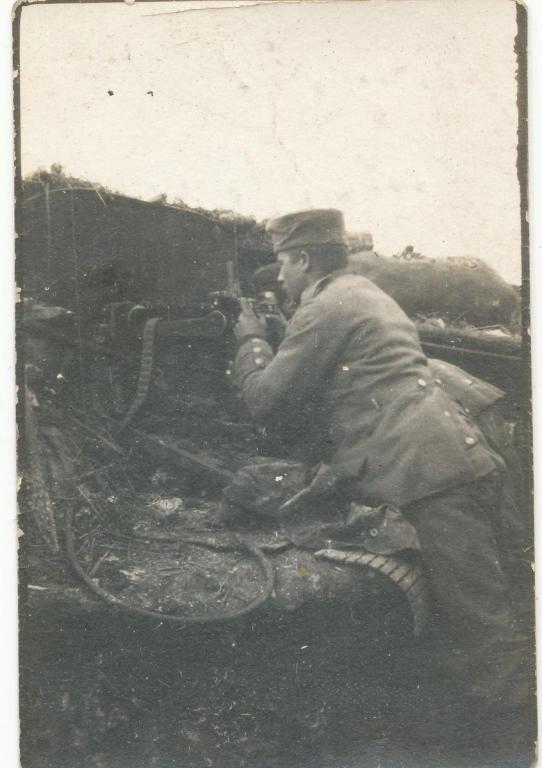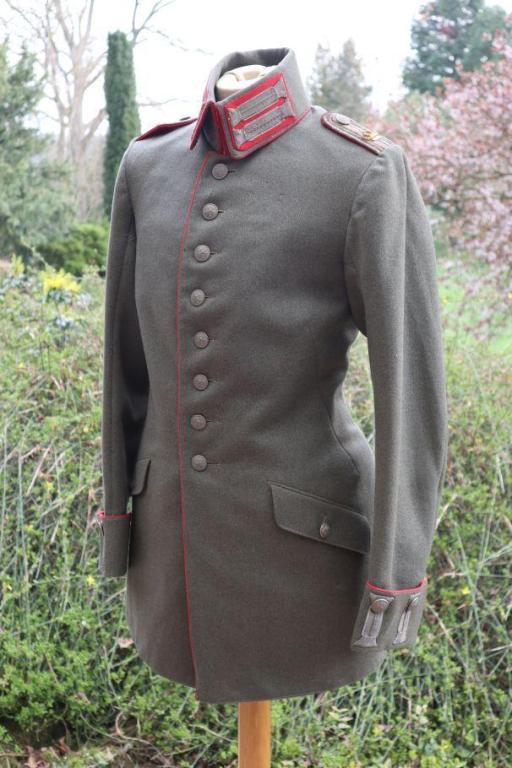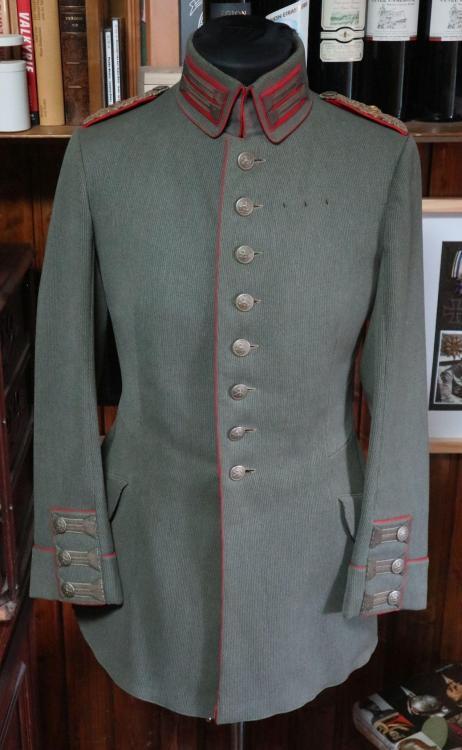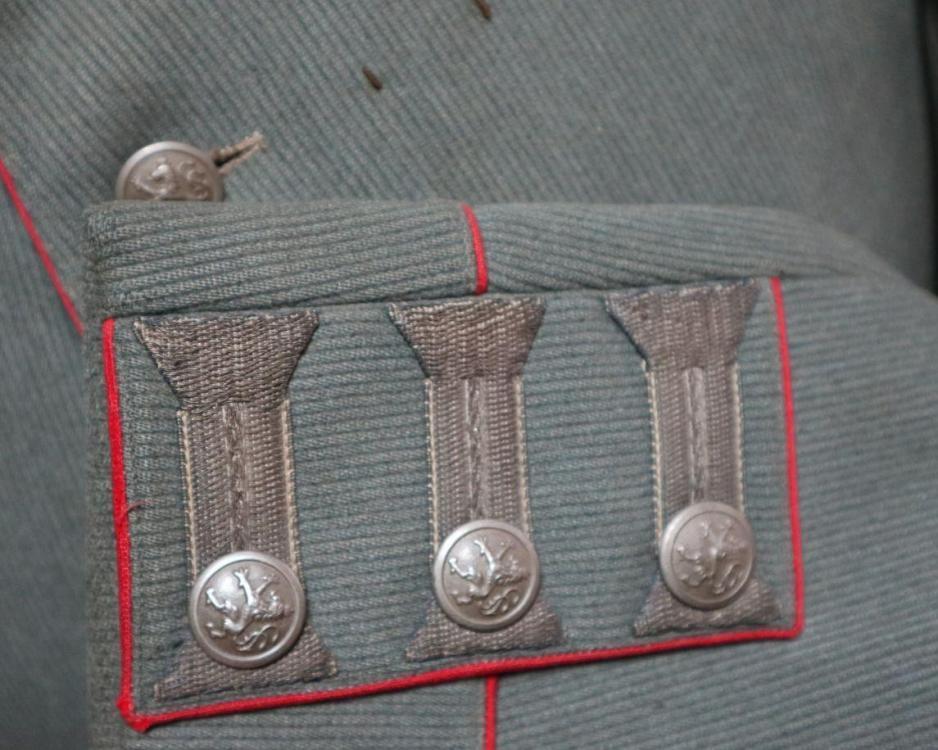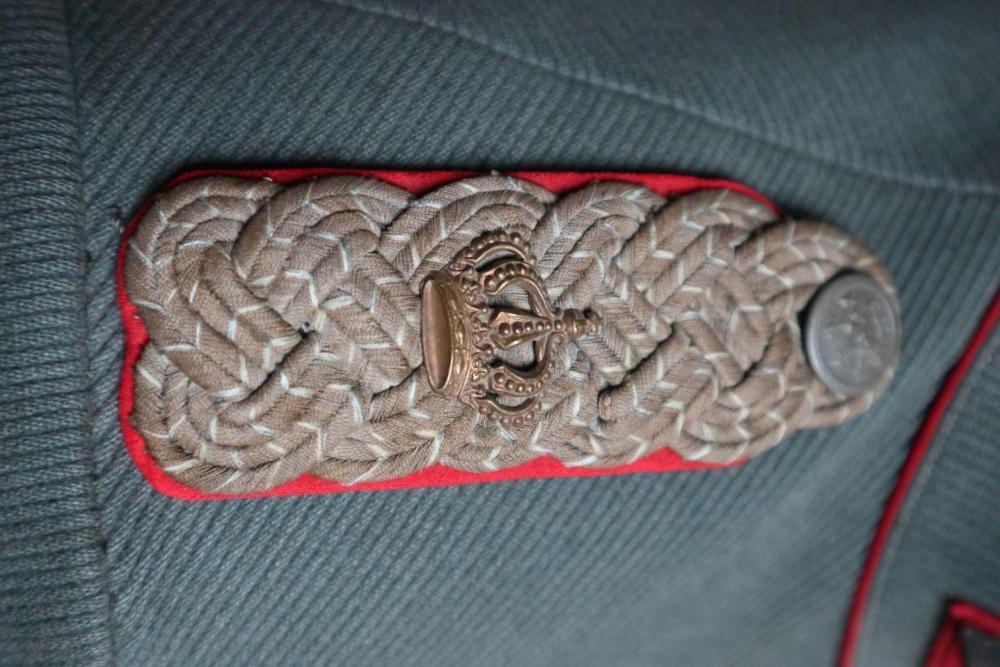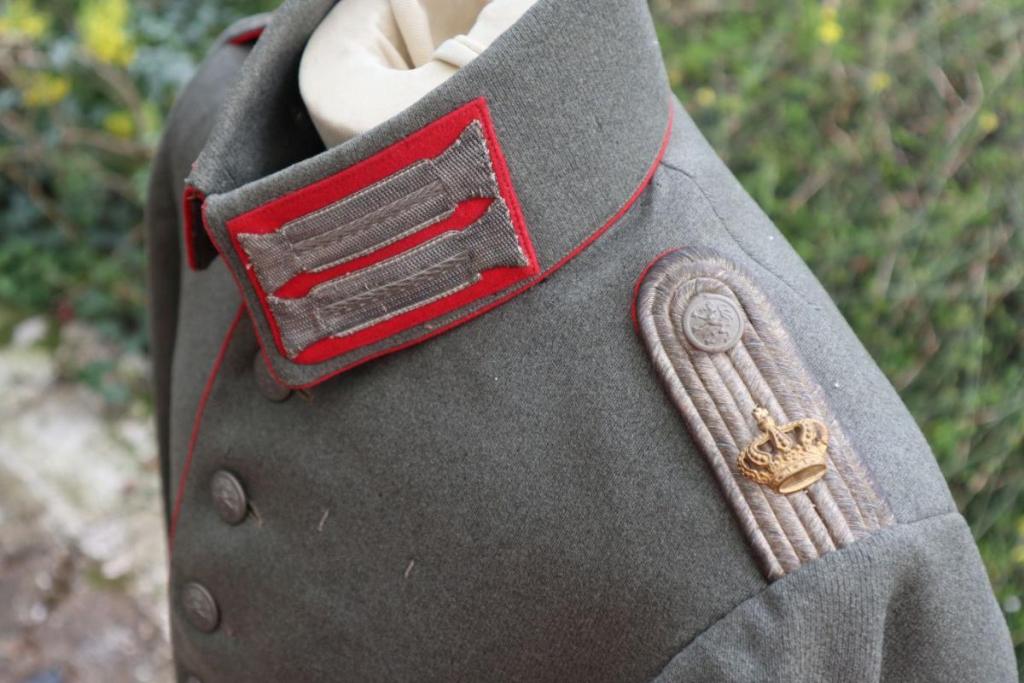-
Posts
29,258 -
Joined
-
Last visited
-
Days Won
84
Content Type
Profiles
Forums
Blogs
Gallery
Events
Store
Everything posted by Chris Boonzaier
-
-
1
-
Hi, indeed, it started in 1945-46 with the RMLE who were supposed to fight the japanese, then became the 2e REI... the badge was replaced in the late 50s by the present regimental pocket badge, but in Afghanistan the dragon was reintroduced for Task Force Dragon and the regiment used it for outside operations like Afghanistan, Mali, Niger
-

Serbia Serbia - Original Chetnik items
Chris Boonzaier replied to serbman's topic in Southern European & Balkan States
I am pretty sure these are real, from a Russian Legionnaire who got them I think in Kosovo or Bosnia -
Hi, may not be the case here, but I have seen WW1 groups where on rare occasions the authorities had lost the overview, and someone was awarded an Iron Cross twice for the same action. in the case in question I think the officer was proposed by 2 different authorities and he was awarded the EK twice for the taking of Lüttich. It apparently also happened in 1940 or 41 once the regulation went through that the Stellv AOK could automatically award the EK2 to soldiers in hospital back in germany who recieved a silver wound badge without a citation for bravery, that the Stellv AOK awarded an EK2, but the division had already proposed one for bravery in the same action. All the best Chris
-
I have had the wifes grandfathers German navy items for decades... then yesterday, her uncle was cleaning out the attic and found these... in a box since the 1930s.... as a young student in the late 20s her grandfather joined the Stahlhelm, then in the 30s transfered to the Sa, then later the NSKK. Not having any SA references it took some time... but this seems to be the Sahlhelmbund as worn on the sleeve for a short while after transfering to the SA, then the collar badges for the Staff of the brigade 79 in Wurzburg, where he was a medical student. I like the bavarian colors in the shoulder boards 🙂
- 1 reply
-
2
-
Sorry for the spoilers in this, it is so rare I do not want to see it being "sold" elsewhere.... when the Legion was formed in 1831, this gentleman was one of the first to join. I think he was in the Regiment Hohenlohe before as he was "Sgt Major just 3 months after joining the legion, demoted to Sgt a few months after that. The 3rd battalion was the first legion unit ever to engage the enemy. Back them the contract was 3 years, he left after three years... a real collection crown jewel for me, his end of contract good conduct discharge
- 1 reply
-
3
-
-
3
-
What a fantastic collection!!!!!
-
This is a rare variation, the railway medal is usually a service medal, but can be awarded to non railway employees. Apparently there are just over 20 awards for "courage" In this case for a legionnaire, from what I can see he was part of the patrol which killed the attacker in the knife attack at Marseilles station in 2017. He himself was not the shooter.
-
Heinrich Steinmetz has a spectacular array of lower end awards... from 7 different states.... I am assuming as a Feldwebel in the Bavarian Infantry leibregiment most were given by visiting heads of state ... but a very unusual array indeed... An "old man" during the war he was with the Regiment in the field, but not really an active combat role and quite some time spent training new recruits at the Alpenkorps field recruit depot. The documents in order of the awarding (I have left out the post war documents)
-
Commando Georges was the brainchild of Bigeard. Considered an elite unit it played an important part in hunting down rebel groups in the Saida area. With a Cadre of French officers and NCOs the unit had a high percentage of ex rebels. Due to the reputation of the unit and the high number of rebels it accounted for the men of the commando were prime targets for revenge operations after the war. This rare numbered badge for the commando is the rarest of Commando George Badges. A souvenier brought back by a german legionnaire.
-
Here are 2 of the members of the platoon recieving the cross of valor and the Brevet given after a year in the platoon. Every company has its desinated marksmen/Snipers, but the support company has the STELD or "long distance" sniper platoon which is armed with the 50cal sniper weapons and lighter ones as well. The patch is non official
-
1
-

Patches of the 2e Regiment Etranger d'infantrie
Chris Boonzaier replied to Chris Boonzaier's topic in France
-
The "stage franchissement" or "crossing qualification" was a qualification for Drivers of the Amphibious APC, the "VAB"... part of the instruction was using a mini resperator, underwater obstacles etc to train them in the case of the VAB sinking. Evacuation of personel etc. In later years the extra armour on the VAB made the vehicule too heavy for amphibious operations. All the new vehicules are too heavy and for that reason the qualification no longer exists. On the left is the standard badge, on the right the relatively rare one used by the 1st company of the 2nd REI
-
1
-

Patches of the 2e Regiment Etranger d'infantrie
Chris Boonzaier replied to Chris Boonzaier's topic in France
The attached Firefighters who are responsible for the vast shooting ranges in the garrigues at Nimes, the 2 rectangular ones are old and new version of the official sleeve badge, the round one is a unit internal unofficial badge Track suit badges for the sportskit of the different companies Two versions of the Task Force Dragon patch, one for Mali, one for Niger Patch for a member of the team that run the training groundsa and shooting ranges -
If I remember right, they got it fighting on the Hatmannsweilerkopf. I think this Photo must be 1920s or early 1930s?
-
OK, a bit of Devils advocate needed here please…. About three years ago a friend was visiting a Schloss in Bavaria which had been the ancestral home of a Graf from about 1820ish to 1920ish. The historical society there is mainly interested in the history of the buildings, not so much the occupants throughout the ages. There is a tiny museum with objects related to the Graf family, just y few odds and ends, but it is not the focus of their work. One of the items in the cases is the dogtag and pouch to the youngest son who was killed serving as a Lt at Verdun in July 1916. In the offices of the society my friend spotted a fieldgrey tunic for a leibregiment Lt. he asked the chairman of the society where it came from, and he had no idea. It had been in the possession of the society for many years, but no one knew its origins and added to that, it is not the kind of thing their museum concentrates on. When my friend asked he said they may consider selling it. My friend put me in contact wit them, I helped identify it as a leiber regiment and confirmed for them that the son served in the Leibregiment. We chatted for some time and I was informed that if they could not find any proof that it belonged to the young Graf they had no need for it. I tried to help by looking up the few photos of him available, but none with the jacket. My info to them was, I think it very possible, maybe even probable it was his, but there was no way of proving it either way as there was no name or tailor label. After a few years the association voted to sell it and we agreed on a price which was good for them financially, and good for me as I really wanted the jacket. Although I will never prove it, here is my thinking… 1) A field grey Leiber jacket is pretty rare. The Bavarian Army had maybe 150 (200?) different units from active, reserve, ladwehr, different branches of service… I am going to go out on a limb and say, if you found a random Field Grey Officers tunic in Bavaria, there will be less than a 1% chance it is from the Leibregiment. 2) If you live near Würzburg, there are probably potentially more 9th IR than other Regiments, if you live near Neu Ulm maybe a good chance for 12 IR… but the Leigbregiment was from men chosen from all over Bavaria, so the items would be spread all over Bavaria. 3) Taking the rarity into account, finding a Leiber Tunic to a Lt in the house where a Leiber LT lives points towards the probability that it was the tunic of the person who lived there. Especially because the dog tag and bag he was wearing when he was killed were there as well. 4) The tunic is early war, with Swedish cuffs worn by some officers in 1915, I have seen them in 1916-17 photos, and there are certainly a handful still around in 1918, but I am thinking most of these would have been on their last legs by them. As the jacket in Question is still in tip top condition, it seems to be logical that it could have belonged to an officer killed earlier in the war. 5) Of course, wishful thinking on my side, and I know it will never be proved, but I am going to go with the “if it walks like a duck and quacks like a duck” thing and say, for me I am pretty damned sure it was the jacket of the young Graf… No need to spare my feelings here… what do you think?
-
OK, a bit of Devils advocate needed here please…. About three years ago a friend was visiting a Schloss in Bavaria which had been the ancestral home of a Graf from about 1820ish to 1920ish. The historical society there is mainly interested in the history of the buildings, not so much the occupants throughout the ages. There is a tiny museum with objects related to the Graf family, just y few odds and ends, but it is not the focus of their work. One of the items in the cases is the dogtag and pouch to the youngest son who was killed serving as a Lt at Verdun in July 1916. In the offices of the society my friend spotted a fieldgrey tunic for a leibregiment Lt. he asked the chairman of the society where it came from, and he had no idea. It had been in the possession of the society for many years, but no one knew its origins and added to that, it is not the kind of thing their museum concentrates on. When my friend asked he said they may consider selling it. My friend put me in contact wit them, I helped identify it as a leiber regiment and confirmed for them that the son served in the Leibregiment. We chatted for some time and I was informed that if they could not find any proof that it belonged to the young Graf they had no need for it. I tried to help by looking up the few photos of him available, but none with the jacket. My info to them was, I think it very possible, maybe even probable it was his, but there was no way of proving it either way as there was no name or tailor label. After a few years the association voted to sell it and we agreed on a price which was good for them financially, and good for me as I really wanted the jacket. Although I will never prove it, here is my thinking… 1) A field grey Leiber jacket is pretty rare. The Bavarian Army had maybe 150 (200?) different units from active, reserve, ladwehr, different branches of service… I am going to go out on a limb and say, if you found a random Field Grey Officers tunic in Bavaria, there will be less than a 1% chance it is from the Leibregiment. 2) If you live near Würzburg, there are probably potentially more 9th IR than other Regiments, if you live near Neu Ulm maybe a good chance for 12 IR… but the Leigbregiment was from men chosen from all over Bavaria, so the items would be spread all over Bavaria. 3) Taking the rarity into account, finding a Leiber Tunic to a Lt in the house where a Leiber LT lives points towards the probability that it was the tunic of the person who lived there. Especially because the dog tag and bag he was wearing when he was killed were there as well. 4) The tunic is early war, with Swedish cuffs worn by some officers in 1915, I have seen them in 1916-17 photos, and there are certainly a handful still around in 1918, but I am thinking most of these would have been on their last legs by them. As the jacket in Question is still in tip top condition, it seems to be logical that it could have belonged to an officer killed earlier in the war. 5) Of course, wishful thinking on my side, and I know it will never be proved, but I am going to go with the “if it walks like a duck and quacks like a duck” thing and say, for me I am pretty damned sure it was the jacket of the young Graf… No need to spare my feelings here… what do you think?
-
OK... how is this for a 1 in a million shot. Think of how many tens of million WW1 German photos there are.... then think that at some stage you have a small pile of Leibregiment pics in a box, 10-15 pics in the office of a historical society... 2 are named.... and one just happens to be the officer above.... I almost fell off my chair!


